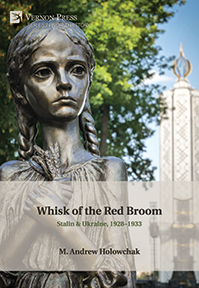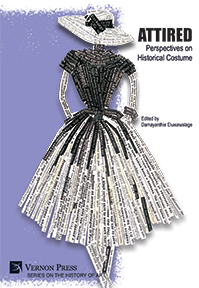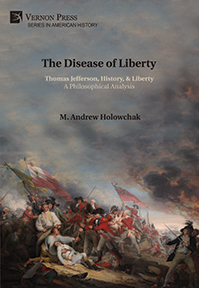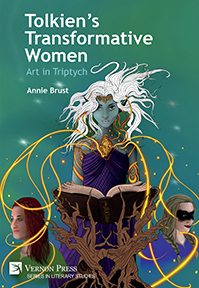Search
Browse
by Publication status
by Subject
Anthropology (26) Art (122) Business and Finance (25) Cognitive Science and Psychology (53) Communication and Journalism (43) Economics (61) Education (65) History (145) Human Geography (22) Interdisciplinary (40) Language and Linguistics (128) Law (16) Music Studies (18) Philosophy (153) Political Science and International Relations (99) Sociology (295) Statistics and Quantitative Methods (19)by Series
Series in Literary Studies (62) Series in Philosophy (58) Series in Education (49) Series in Sociology (42) Series in World History (31) Series in Politics (30) Bridging Languages and Scholarship (27) Series in Language and Linguistics (25) Cognitive Science and Psychology (20) Series in Philosophy of Religion (20) Series in American History (19) Series in Art (19) Critical Perspectives on Social Science (16) Series in Cinema and Culture (16) Curating and Interpreting Culture (15) Series on the History of Art (14) Series in Anthropology (13) Series in Critical Media Studies (13) Economics (13) Series in Business and Finance (12) Series in Music (12) Series in Communication (9) Series in Performing Arts (9) Philosophy of Personalism (8) Series in Law (8) Series in Economic Methodology (7) Series on Climate Change and Society (7) Classics in Economics (6) Series in Economic Development (6) Women's Studies (6) Philosophy of Forgiveness (5) Series in Built Environment (5) Series in Economic History (5) Series in Philosophy of Science (4) Series in Social Equality and Justice (4) Series on the History of Science (4) Serie en Sociología (3) Series in Contemporary History (3) Series in Creative Writing Studies (3) Series in Design (3) The Interdisciplinary Built Environment (3) Serie En Estudios Literarios (2) Series in Heritage Studies (2) Series in Innovation Studies (2) Serie en Ciencias Políticas (1) Serie en Comunicación y Medios (1) Serie en Entorno Construido (1) Serie en Estudios Culturales (1) Serie en Filosofía (1) Serie en Filosofía de la Ciencia (1) Serie en Música (1) Series in Classical Studies (1) Series in Economics of Technological Change (1) Series in Philosophy of Race (1) Series in Urban Studies (1)by Language
English Spanishby Author
Browsing with filters

Whisk of the Red Broom: Stalin & Ukraine, 1928-1933
April 2024 / ISBN: 978-1-64889-860-0Availability: In stock
262pp. ¦ $72 £58 €67
Once Joseph Stalin took the lead of the Soviet Bolshevists after the death of Vladimir Lenin, he quickly turned away from Lenin’s New Economic Policy, with its many concessions to capitalism, to a policy of one-country socialism, driven by his first Five Year Plan (1928) and a plan that other Bolsheviks like Lenin and Trotsky thought impossible. That shift, radical, forced Stalin to “urbanize” the USSR’s vast rural areas—that is, to impose a factory-like model on the Soviet countryside to maximize its efficiency. That required collectivizing the numerous Soviet farms—making large farms of the numerous small farms. Ukraine was to be the model republic due to its vastness and black, fertile lands. Not only were the republics to be collectivized, they were also to be Russified for the sake of model efficiency and centralization of control. And so, while Stalin, early in his political life, preached respect for the cultural diversity of its many republics and the right of secession of any republic, the need to collectivize the Soviet farms for the sake of one-country socialism demanded compliance. Ukrainian peasant-farmers were non-compliant, for they readily saw that the State was asking them for everything and giving back nothing but the pledge of efficient farms to benefit the State, and non-compliance forced Stalin’s authoritarian hand. He imposed laws that brutally punished non-compliant peasants, called “kulaks.” The plan was dekulakization. The intransigents were dispossessed of their property, alienated from other villagers, exiled, and exterminated. The result in Ukraine was the gross inefficiency of both collective and individual farms. That led to intolerance of Ukrainian culture and theft of Ukrainian grain, and even all other findable foodstuffs, to punish Ukrainians. The end was a great famine in 1932 and 1933 in which some four million Ukrainians died. Did Stalin believe that he could urbanize the Soviet countryside? Did Stalin think that socialism could take root in the backwater Soviet Union without the aid of Western succor? Did Stalin hate Ukrainians because many pressed for a cultural identity separate from that of Russia? Had Stalin’s plan of dekulakization from the beginning been a policy of political genocide? Those are some of the many questions I aim to answer in this book. I focus much on Stalin’s writings in the efforts to ascertain his mindset as a dictator.
Attired: Perspectives on Historical Costume
Edited by
Damayanthie Eluwawalage, Delaware State University
Availability: In stock
146pp. ¦ $77 £61 €72
This publication explores the integrative narratives of historical costume in the novel universal perspective of literature, leisure, ornamentation, customs/traditions, and theoretical contexts. The adaptation, mutation, and transformation of attire are the result of complex interactions between many factors, such as economic conditions, political conditions, social conditions, psychological conditions, and technology. The meanings encoded in the costume are one of the noticeable hallmarks of any society. This proposed book investigates multidisciplinary topics, for instance, embellishments such as needlework and embroidery; the historical concept of fight, physical encounter, combat, or bout and its connection with related-attire; the contribution of dress to the narrative process of Virgil’s 'Aeneid'; and the theory and philosophy of fashion.
The Disease of Liberty
Thomas Jefferson, History, & Liberty: A Philosophical Analysis
February 2024 / ISBN: 978-1-64889-819-8Availability: In stock
224pp. ¦ $77 £62 €72
Liberty for Jefferson was 'the' driving force of human history and a realizable state of the human organism and of a society of men. Study of history and anthropology showed that humans were moving from the barbaric independence suffered in primal hordes, which lived inefficiently on lands, to a more economical, human-friendly use of land in social settings, demanding laws for order. Those laws, historically, favored the powerful few to the detriment of the hoi polloi. As a pupil of the Enlightenment, Jefferson argued that all humans were by nature equal, and thus, deserving of as much civic liberty as a reason-oriented and sciences-loving society, a Jeffersonian republic, could guarantee them. This book, philosophical, explains how such a society was possible, given Jefferson’s conception of the nature of man, and how the realization of one such society could lead, through contagion, to a global community of such societies. There are a large number of books that cover Jefferson’s political ideology (e.g., Gordon Wood’s 'Empire of Liberty' and Adrienne Koch’s 'The Philosophy of Thomas Jefferson')—too many to limn—but none that gets at the philosophical implications of TJ’s views on liberty. This book, examining TJ as a natural scientist and philosophy, examines and situates him in the manner of other great political ideologists of his day—e.g., Hume and Kant.
Tolkien’s Transformative Women: Art in Triptych
Annie Brust, Kent State University
Availability: In stock
282pp. ¦ $78 £61 €72
J.R. R. Tolkien has been revered as the father of twentieth-century fantasy; however, many initially criticized him for his handling of the textual matter as male-centric magical lands that did not feature prominent female roles or significant female characters. This book will highlight the vast community of powerful female figures that Tolkien created in his fantasy writing, stemming from the distinct and dominant female forces he created in his academic translation and poetry. These fierce women serve as a culmination of the powerful forces of women and female character that originated in Medieval, Norse, and Celtic traditions. They help to create the framework from which Tolkien shaped his female community, not merely as singular figures, as previously featured, but as a dynamic network of figures who shape Tolkien's creative art. For the first time, this discussion looks at the entire community of women, featuring previously excluded figures from his academic works and highlighting translation bias in modern manuscripts of the extant medieval works that influenced these women. It also seeks to create a comprehensive guide and detailed appendices exploring the female characters and influences throughout his writing portfolio. This book seeks to uncover the hidden voices of the past to find their rightful home in the strong female voices of the present, rewriting history to regain a sense of the past.
A Shot in the Dark: A History of the U.S. Army Asymmetric Warfare Group
Paul Jeffrey Cook, Temple University
Availability: In stock
358pp. ¦ $81 £65 €76
This book presents the U.S. Army Asymmetric Warfare Group (AWG) as an example of successful change by the Army in wartime. It argues that creating the AWG required senior leaders to create a vision differing from the Army’s self-conceptualization, change bureaucratic processes to turn the vision into an actual unit, and then place the new unit in the hands of uniquely qualified leaders to build and sustain it. In doing this, it considers the forces influencing change within the Army and argues the two most significant are its self-conceptualization and institutional bureaucracy. The work explores three major subject areas that provide historical context. The first is the Army’s institutional history from the early 1950s through 2001. This period begins with the Army seeking to validate its place in America’s national security strategy and ends with the Army trying to chart a path into the post-Cold War future. The Army’s history is largely one of asymmetric warfare. The work thus examines several campaigns that offered lessons for subsequent wars. Some lessons the Army took to heart, others it ignored. As the AWG was a direct outgrowth of the failures and frustrations the Army experienced in Afghanistan and Iraq, the book examines these campaigns and identifies the specific problems that led senior Army leaders to create the AWG. Finally, the work chronicles the AWG’s creation in 2006, growth, and re-assignment from the Army staff to a fully-fledged organization subordinate to the U.S. Army Training and Doctrine Command in 2011 to its deactivation. This action resulted not from the unit’s failure to adapt to a post-insurgency Army focusing on modernization. Rather, it resulted from the Army failing to realize that while the AWG was a product of counterinsurgency, it provided the capability to support the Army during a period of great strategic and institutional uncertainty.






